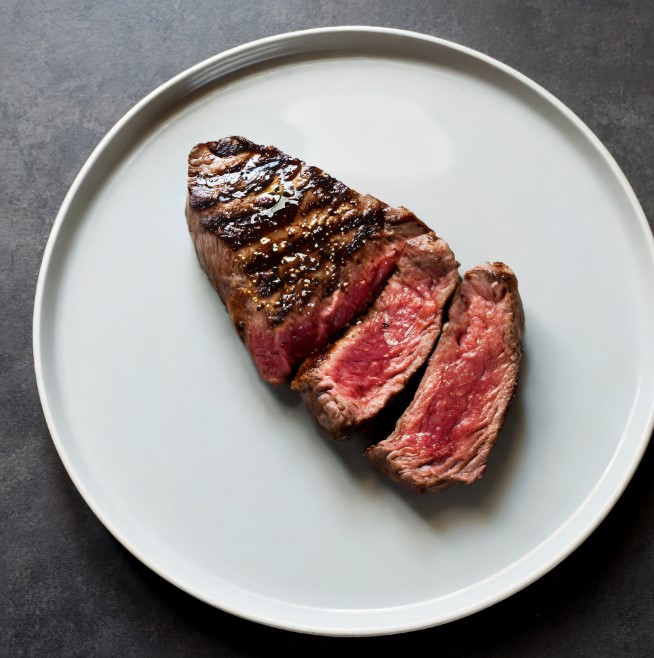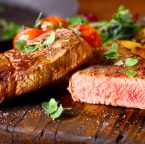If you’re not very active and just trying to drop a few pounds, cutting carbs and bumping up fats can work. But if you’re actually training—especially to build muscle—you need carbs. A lot of them.
A solid rule: shoot for at least 2 grams of carbs per pound of bodyweight every day. Just keep in mind, when carbs go up, fats usually need to come down a bit to balance things out.
Low-fat diets? Those were big in the ‘80s, but most people don’t buy into that anymore. Still, if you’re eating a ton of carbs and trying to put on clean size, you can’t ignore fat intake either.
There’s no magic number. It depends on your goals and how your body handles food. Let’s break down what a weight-loss doc and some actual research say about dialing it in the right way.

What Is A Low Fat Diet?
Let’s break down what a low-fat diet really entails. Typically, a low-fat diet consists of getting about 20 to 35 percent of your daily calories from fat. For those going even lower, very low-fat diets contain less than 10 percent of calories from fat.
According to the World Health Organization, American Heart Association, and USDA guidelines, keeping your fat intake within the 20 to 35 percent range is recommended. For example, if you’re 180 pounds and consuming 2,500 calories daily, this equates to 500 to 875 calories from fat, or roughly 55 to 97 grams.
When it comes to protein, athletes often consume about 0.8 to 1 gram per pound of bodyweight, translating to 144 to 180 grams of protein per day. That’s about 23 to 29 percent of your total calorie intake.
So, for a 2,500 calorie diet, you might be looking at something like this:
- Total Calories: 2,500
- Protein: 648 calories (162 grams)
- Carbs: 1,116 calories (279 grams)
- Fat: 688 calories (76 grams)
This structure aligns with a low-fat diet at approximately 27 percent of total calories from fat.
However, athletes often aim for a higher carb to protein ratio, like 1:2 or 1:3. Opting for a 1:2.5 ratio, for instance, your macros might shift to:
- Total Calories: 2,500
- Protein: 648 calories (162 grams)
- Carbs: 1,620 calories (405 grams)
- Fat: 232 calories (26 grams)
Here, fat drops to just under 10 percent of your daily calories, fitting a very low-fat diet category. (1) Elite athletes sometimes need even more carbs. Dr. Aastha Kalra, a New York-based physician, notes, “For intense training, like four hours a day, an athlete might need around 12 grams of carbs per kilogram of bodyweight daily.”(2)
For an athlete weighing 180 pounds and exercising heavily, their calorie intake might exceed 3,500 calories a day, but their fat intake remains relatively low. The question is, does this approach provide enough fat for optimal health and muscle growth?

Can You Gain Muscle With Low Fat, High Carb?
Carbs are the powerhouse for athletes, undeniably crucial for peak performance and muscle growth. When you’re aiming to be at the top of your game and build functional muscle, carbs are non-negotiable.(3)
They’re not just fuel; they’re the most efficiently metabolized source of energy for high-intensity workouts where your body relies heavily on fast-twitch muscle fibers. Dr. Kalra emphasizes this, noting that carbs are key for replenishing glycogen stores, which, if depleted, can significantly hamper performance, especially with regular intense exercise.
But there’s more to the story. Low-carb diets can impair cognitive functions and even increase the risk of skeletal muscle damage in athletes. A study on world-class race walkers who switched to a low-carb, high-fat diet found a decrease in exercise economy and performance. Plus, carbs play a critical role in preventing dehydration during intense workouts.
Here’s another angle: carbs boost insulin levels, an anabolic hormone crucial for protein metabolism and nutrient absorption. (4) This makes carb-loading a popular strategy among athletes looking to beef up their muscle mass.
However, don’t underestimate the role of fats. They’re not just essential for energy and absorbing vitamins; fats are crucial for hormonal balance. For instance, polyunsaturated fats are linked to healthy testosterone levels, which in turn correlate with improved body composition, mood, and athletic performance.(5)(6)
So, what’s the takeaway for fat intake? About 20 percent of your calories from fat is a solid benchmark for athletes. This balance supports nutrient absorption and anabolic processes.
But remember, there’s no one-size-fits-all in nutrition. Some athletes thrive on very low fat, others don’t. The key is to monitor your intake and adjust it based on your performance both in the gym and in daily life. Your body will tell you what works best for you.

Does Low Fat Work Well For Weight Loss?
When it comes to weight loss, the debate between low fat and low carb diets is ongoing. But let’s cut through the noise: the most crucial factor in losing or gaining weight is your calorie balance, not just manipulating macronutrients.
There’s research supporting both sides. Some studies suggest that, with equal calories, low-fat diets lead to more fat loss,.(7) while others champion low-carb approaches for better results.(8)(9) And then there are arguments about the overall health impacts of each diet.(10)(11)
A pivotal study in this debate was a high-quality, randomized clinical trial conducted in late 2018. It involved over 600 participants and monitored their eating habits for a year. The conclusion? No significant difference in weight loss between those on low-fat and low-carb diets.
Dr. Kalra points out that in this study, the common denominator for success in both groups was avoiding sugar, flour, and processed foods. It’s also worth noting that the benefits of a low-carb diet might be more pronounced in people with metabolic issues, like insulin resistance, though this might not be as relevant for athletes and bodybuilders.
Now, for the average person, the scenario changes. Most people aren’t as diligent about weighing food and tracking calories as athletes. So, the real question becomes: which diet is more sustainable for everyday life?
For athletes aiming to lose weight while retaining muscle and performance, a smart approach could be to adjust calorie and carbohydrate intake based on their activity levels. This method ensures that they’re fueling their bodies adequately on training days, while still creating a calorie deficit for weight loss.
Should You Cycle Your Fat Intake?
Considering whether to cycle fat intake? Blending elements from both low carb and low fat diets might be the key, particularly by adjusting your calorie and carb intake based on your workout schedule. On days when you’re hitting the gym, upping your carbs and calories could be beneficial, while scaling back on rest days might be the way to go.
Dr. Kalra advocates for carb cycling, especially around exercise times. It’s all about managing glycogen levels – the fuel your muscles and liver use during intense, prolonged exercise. By increasing carbohydrate intake before, during, and after exercise, you ensure your body has enough fuel when it needs it most, potentially enhancing performance.
For athletes, this means consuming more carbs and calories on training days and cutting back on rest days, potentially increasing fat intake. This strategy could offer benefits like improved insulin sensitivity and better appetite control.
Let’s say your maintenance calorie intake is 2,500 calories a day, and you’re aiming for fat loss. A weekly deficit of 3,500 calories can lead to a pound of weight loss. You could distribute this deficit across your rest days, maintaining your usual intake on workout days. For weight gain, the reverse applies – increase calories and carbs on workout days and maintain on rest days.
However, for athletes training intensely almost every day, cutting carbs on rest days might not be ideal. Consistently high carb intake can aid in recovery.
Final Word
In summary, balancing calories is essential, whether you’re looking to lose or gain weight. Athletes should ensure they get enough carbohydrates and fats for performance and health. Tracking micronutrients is vital. Generally, getting at least 20 percent of your calories from fat is advisable, but for a personalized plan, consulting a dietitian or sports nutritionist is the best approach.
References
1. Liu AG, et al. A healthy approach to dietary fats: understanding the science and taking action to reduce consumer confusion. Nutr J. 2017 Aug 30;16(1):53.
2. Kanter M. High-Quality Carbohydrates and Physical Performance: Expert Panel Report. Nutr Today. 2018 Jan;53(1):35-39.
3. Burke LM, et al. Low carbohydrate, high fat diet impairs exercise economy and negates the performance benefit from intensified training in elite race walkers. J Physiol. 2017 May 1;595(9):2785-2807.
4. Dimitriadis G, et al. Insulin effects in muscle and adipose tissue. Diabetes Res Clin Pract. 2011 Aug;93 Suppl 1:S52-9.
5. Mumford SL, et al. Dietary fat intake and reproductive hormone concentrations and ovulation in regularly menstruating women. Am J Clin Nutr. 2016 Mar;103(3):868-77.
6. MInguez-Alarcón L, et al. Fatty acid intake in relation to reproductive hormones and testicular volume among young healthy men. Asian J Androl. 2017 Mar-Apr;19(2):184-190.
7. Hall KD, et al. Calorie for Calorie, Dietary Fat Restriction Results in More Body Fat Loss than Carbohydrate Restriction in People with Obesity. Cell Metab. 2015 Sep 1;22(3):427-36.
8. Volek J, et al. Comparison of energy-restricted very low-carbohydrate and low-fat diets on weight loss and body composition in overweight men and women. Nutr Metab (Lond). 2004 Nov 8;1(1):13.
9. Aude YW, et al. The national cholesterol education program diet vs a diet lower in carbohydrates and higher in protein and monounsaturated fat: a randomized trial. Arch Intern Med. 2004 Oct 25;164(19):2141-6.
10. Seidelmann SB, et al. Dietary carbohydrate intake and mortality: a prospective cohort study and meta-analysis. Lancet Public Health. 2018 Sep;3(9):e419-e428.
11. Dehghan M, et al. Associations of fats and carbohydrate intake with cardiovascular disease and mortality in 18 countries from five continents (PURE): a prospective cohort study. Lancet. 2017 Nov 4;390(10107):2050-2062.








